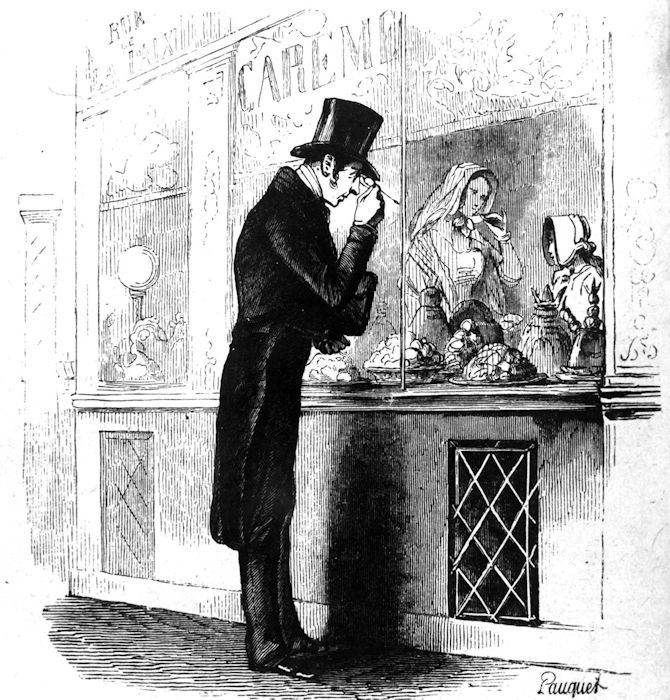Entremets
Today, the French terms entremets, patisseries and desserts are used interchangeably. With regard to a meal, it is the sweet course at the end of the menu. A few basic ingredients can produce an infinite variety of entremets. Their preparation requires precision, skill and thorough knowledge of the ingredients.
Entremets, pastry or dessert?
In everyday French, an entremets is a warm, cold or frozen dish, served at the end of the meal after the cheese. It has become usual to refer to entremets as desserts.
In the 12th century however, the entremets referred to the entertainment or musical interludes between courses. Over the following centuries, the entremets became a sweet or savoury dish served at the table between the roasts and the dessert. Nowadays an infinite variety of warm, cold and frozen entremets exists, in countless forms such as soufflés, puddings, fritters, creams, choux buns, ice creams and sorbets to name but a few.
Pastries are a type of entremets. They comprise sweet products where pastry is used as a base (tart), or as a case (pie) and which are baked in an oven.
In medieval times, pastries referred to all cakes and pâtés. Pastry chefs made tarts, flans and meat pâté and also sold eggs.
In the Middle Ages, a biscuit was a simple pancake made from wheat flour. As it kept for a long time, it was ideal food for sailors and soldiers. From the 17th century, biscuits became more refined and, from the latter half of the 19th century, they became an industrially manufactured product.
The preparation of entremets requires precision and skill
In addition to the basic ingredients of eggs, butter, oil or margarine, flour or starch, cream, milk and sugar, depending on the recipe, entremets may contain various other elements such as gelling agents, baking powder, yeast, fruit, walnuts, hazelnuts, almonds and chocolate. To create the perfect entremets, it is essential that all the ingredients are measured very precisely, that they are as fresh as possible and that the utensils used are spotlessly clean.
Even in basic preparations, pastry chefs must be particularly skilled in working with sugar and chocolate. Generally, sugar is used in the form of granulated white sugar or icing sugar. However, some recipes use sugar syrup which may be more or less concentrated. The sugar is sometimes used at very high temperatures of up to 180°C. Nougat, sweets or toffees, for example, each require the sugar to be at a specific temperature. Sugar is used at a temperature of 120°C to 126°C to make nougat. From 145°C, the hardened and brittle syrup can be shaped in a sweet mould and is thus used to make hard sweets or lollipops.
Different cocoa products, such as cocoa powder or couverture chocolate, can be used to make chocolate entremets. Couverture must contain at least 31% cocoa butter. When moulding, couverture is tempered to give chocolate a smooth sheen, hardness when broken and its characteristic creaminess. Tempering consists in crystallising cocoa butter in the most stable form possible, by heating and cooling the chocolate through a sequence of specific temperatures.
Moulds to add shape
Moulds give shape to the ingredients placed in them. Frozen entremets appeared in European cuisine in the 18th century in an array of unusual shapes, such as asparagus, a duck, an ear of corn or a peacock. Biscuit and cake moulds also come in different shapes and sizes and often take the name of the entremets they produce, such as a madeleine tin, a gugelhupf tin and a loaf tin. Moulds are made from different materials, depending on their intended use. Those used for cooking may be made from clay, metal or silicone, while wooden moulds are used to give shape to food before it is cooked.
PAULI, Philip, 2008. Technologie culinaire. Winterthur : Pauli Fachbuchverlag AG
HORDE Tristan, 2004. Dictionnaire des mots de la table. Bordeaux : Édition Sud Ouest



